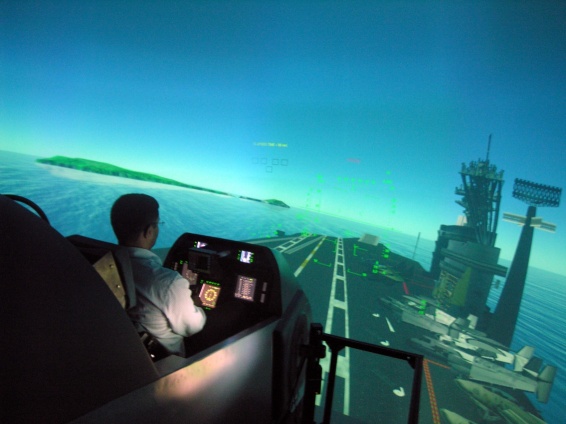SOURCE: AFI


The Aeronautical Development Establishment (ADE), a premier research and development laboratory under India’s Defence Research and Development Organisation (DRDO), is making significant strides in the field of advanced simulation technology. Recent developments indicate that ADE is actively working on AI-enabled high-fidelity simulators, a cutting-edge tool designed to revolutionize training, testing, and validation across various sectors, including defence, aerospace, and autonomous systems. This article explores what AI-enabled high-fidelity simulators are and how ADE’s efforts are shaping the future of simulation-based innovation.
High-fidelity simulators are advanced systems that replicate real-world environments, scenarios, or processes with remarkable accuracy. These simulators use sophisticated hardware and software to mimic the physical, visual, and operational characteristics of actual systems, such as aircraft, vehicles, or medical procedures, in a controlled setting. The term “high-fidelity” refers to the level of realism and detail these simulators offer, making them almost indistinguishable from reality in terms of sensory feedback, behavior, and complexity.
Adding artificial intelligence (AI) to high-fidelity simulators takes their capabilities to the next level. AI-enabled high-fidelity simulators integrate machine learning, deep learning, and adaptive algorithms to enhance realism, automate processes, and provide intelligent responses to user actions. Here’s how they work:
- Enhanced Realism and Adaptability: AI algorithms can dynamically adjust simulations based on user inputs, environmental factors, or predefined objectives. For example, in an aircraft simulator, AI can simulate realistic weather changes, enemy responses, or system failures, ensuring that trainees face unpredictable and challenging scenarios.
- Autonomous Scenario Generation: Unlike traditional simulators that rely on pre-programmed scripts, AI can generate complex, adversarial, or randomized scenarios in real time. This is particularly useful for testing autonomous systems, like drones or self-driving vehicles, where the simulator can mimic traffic patterns, obstacles, or cyber threats.
- Intelligent Assessment and Feedback: AI can analyze user performance during simulations, providing instant feedback, identifying weaknesses, and suggesting improvements. In medical or military training, for instance, AI can evaluate decision-making, reaction times, and technical skills, offering a level of precision that human evaluators might miss.
- Reduced Dependency on Human Operators: High-fidelity simulators often require expert operators to manage scenarios and ensure realism. AI reduces this need by autonomously controlling simulations, freeing up human resources for higher-level tasks like strategy development or scenario design.
- Cost and Time Efficiency: By combining high-fidelity simulation with AI, developers can test and train systems in virtual environments without the high costs and risks associated with real-world testing. This is especially valuable in defence applications, where physical trials can be expensive and dangerous.
Examples of AI-enabled high-fidelity simulators include flight simulators for pilot training, surgical simulators for medical education, and autonomous vehicle testing platforms. These systems leverage technologies like reinforcement learning, computer vision, and natural language processing to create immersive and interactive experiences.
ADE, known for its work on unmanned aerial vehicles (UAVs), missile systems, and avionics, is now focusing on integrating AI into high-fidelity simulators to support India’s defence and aerospace sectors. The organization’s expertise in autonomous systems, such as the Rustom and Nishant drones, positions it well to develop simulators that can test and train future technologies.
NOTE: AFI is a proud outsourced content creator partner of IDRW.ORG. All content created by AFI is the sole property of AFI and is protected by copyright. AFI takes copyright infringement seriously and will pursue all legal options available to protect its content.